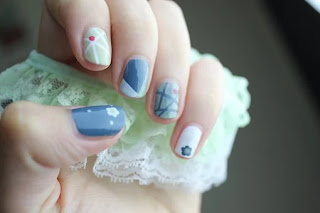When looking for the perfect, long-lasting nail polish, many stumble upon the term Shellac. Find out what is behind the popular nail trend here.
One of the biggest beauty challenges we women face is definitely the painting of our fingernails. It is not uncommon for unsightly blunders to creep in when they are applied and after a day at the latest the paint flakes off again, leaving behind an unkempt look. The cosmetic industry has responded to our needs in recent years and created particularly long-lasting paints and topcoats.
One of the beauty trends from the nail salons is called Shellac and is especially for those of us who do not like to have gel nails applied but still do not want to do without well-cared for hands. Because: Shellac promises a shelf life of up to three weeks.
What is Shellac anyway?
Shellac is a resin-like substance that is extracted from the excrement of lacquer scale insects after they have sucked on certain plants. In contrast to gel or acrylic nails, Shellac is a purely natural product - but the substance has also been used in lipsticks and mascara for years. In fact, Shellac is the brand name for a mixture of nail polish and gel, but it has established itself as an umbrella term.The difference to gel nails
Strictly speaking, Shellac is also a gel, but it is handled differently in its application. When modeling nails with gel, the natural nail is first filed, roughened and degreased. After applying the adhesive gel, several layers of a plastic gel follow, which automatically makes the nail appear thicker and more unnatural. A manicure with Shellac, on the other hand, is gentler on the nail and application is much faster. A visit to the nail salon only takes an hour - but the price is similar for both applications. However, with Shellac the natural nail cannot be extended with so-called tips. An extension is actually only possible for manicures with gel or acrylic.How is Shellac applied?
Although there are now also sets for home use, it is best to have a Shellac manicure done in the nail salon. Similar to nail modeling with gel, three layers are applied to the nail during treatment - basecoat, colored layer and topcoat - each of which has to cure under the UV lamp. The varnish is then firmly attached to the nail and lasts for about three weeks.Remove Shellac
To remove the shellac, the nail designer uses a special tincture that contains solvents. For this purpose, the nails are wrapped with soaked pads and usually also wrapped in aluminum foil. After about ten minutes, the paint can then be easily removed. But be careful: the tincture removes fat from the nail and can therefore make it brittle and susceptible to infection. At the same time, it attacks the cuticle. You should therefore give your hands a break every now and then.Shellac: pros and cons
Shellac also has disadvantages for the nail despite the gentler and faster application. Here are the advantages and disadvantages at a glance:Advantages
- Particularly long shelf life of up to three weeks
- Quick application in the nail salon
- Clearly natural result compared to gel
- Natural nail is used less
- Quick removal
Disadvantages
- No nail extension possible, the natural nail determines the shape
- Tincture to dissolve the shellac can be aggressive to the cuticle
- The varnish grows out like with the gel below and has to be renewed or removed after three weeks at the latest
Tags:
all about nail care
beautiful nails
beauty
manicure
nail care
nail polish
nails 2020
shellac nails




